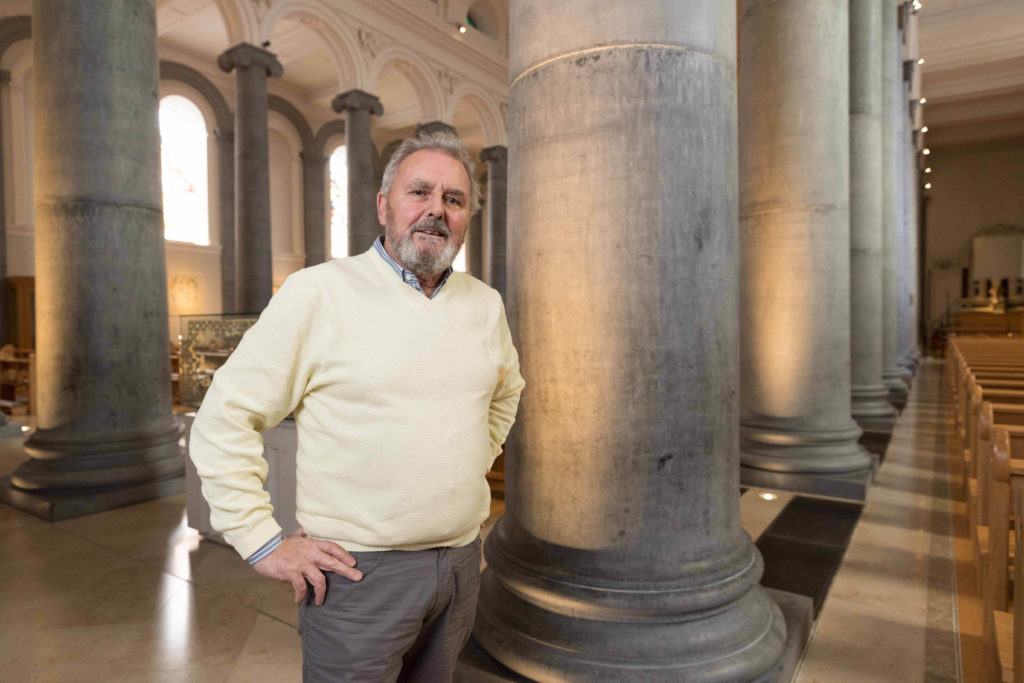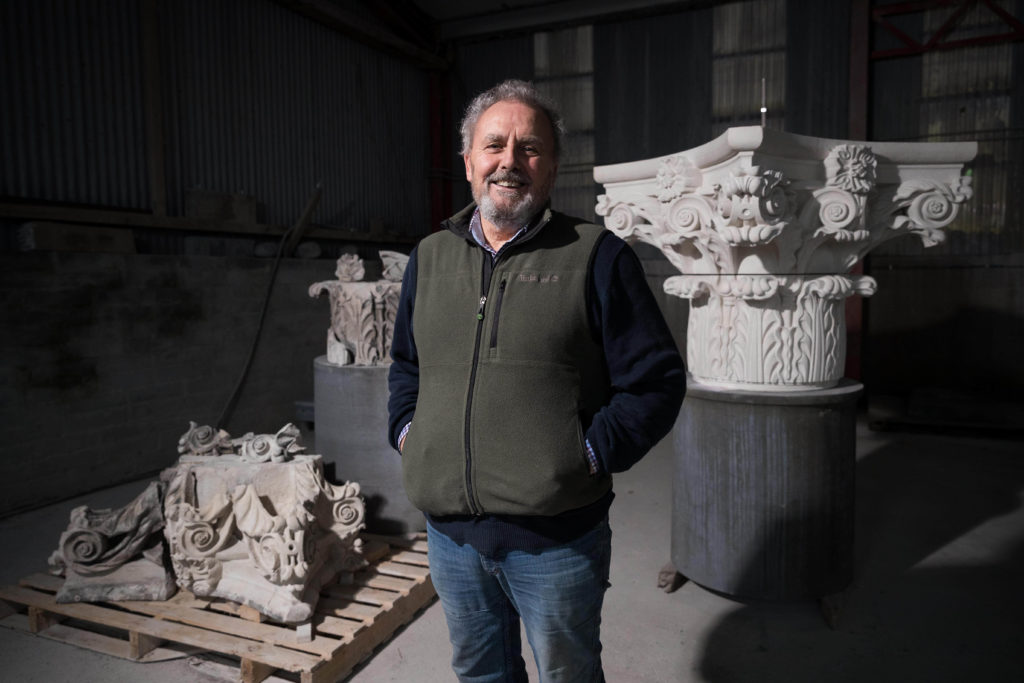URGENT action is needed to preserve Ireland’s traditional stone buildings an industry leader has warned.
Historic structures across the nation may not be in use in years to come if the traditional skills required to effectively maintain them them fail to pass down through the generations.
A conference taking place in Boston, Co. Clare tomorrow will address the concerns, hosted by Burren-based firm Irish Natural Stone (INStone).
The company is responsible for delivering the Irish Hunger Memorial in New York City, the restoration of the Four Courts in Dublin, St. Mel's Cathedral in Longford, St. John’s Cathedral in Limerick, the O'Connell Monument in Ennis, the Irish Cultural and Learning Foundation in Phoenix in the US and Hope House in Bath, England.
 Frank McCormack, Founder and Director of Irish Natural Stone, pictured inside the restored St. Mel's Cathedral in Longford which suffered extensive fire damage in 2013. (Pic: Eamon Ward)
Frank McCormack, Founder and Director of Irish Natural Stone, pictured inside the restored St. Mel's Cathedral in Longford which suffered extensive fire damage in 2013. (Pic: Eamon Ward)Company founder Frank McCormack said the event, titled the National INStone Symposium, will highlight the “urgent need to educate public bodies about bringing vernacular buildings and derelict housing back into use in a proper and correct manner with sensitivity towards their heritage aspect, ensuring the use of natural materials”.
Mr McCourt claims all stakeholders involved in preserving Ireland’s “built heritage” must understand what natural materials must be used to ensure this and how to use them.
“Unfortunately, we are at a concerning stage where there is a widening gap in traditional skills within the heritage sector,” Mr McCormack explained.
Warning that the traditional skills once commonly deployed in the conservation of old buildings were being lost, he claims intervention at the national level will be required “to ensure that the heritage value of Ireland’s vernacular properties is not undermined”.
 Masonry tools at the workshop of Irish Natural Stone in County Clare (PIC: Eamon Ward)
Masonry tools at the workshop of Irish Natural Stone in County Clare (PIC: Eamon Ward)A range of experts in the field will address those gathered for tomorrow’s conference, including Dr. Patrick Wyse Jackson, Associate Professor of Geology and Curator of the Geological Museum at Trinity College Dublin (TCD); Barry O’Reilly of the Department of Housing, Local Government and Heritage; Hugh Kavanagh, coordinator of the All-Ireland Heritage Skills Programme for the Prince's Foundation; Dr. John Treacy of Clare County Council; and Alan Micklethwaite, a renowned stone carver with many years of experience in the conservation of historic monuments and sculpture.
“With a pressing need to preserve our built heritage and upgrade our building stock to modern-day comfort levels, all stakeholders involved need to understand traditional building methods and how we can incorporate suitable modern materials to achieve the required energy efficiency rating in the building,” Mr. McCormack explained.
“We need to close the gap in both traditional skills and the understanding of historic buildings,” he added.
“To achieve this, a standardised national quality rating and assessment process should be introduced so that local authorities and public bodies, most of whom will be participating in the symposium, can better understand the process of properly conserving and restoring old buildings, from the methods of construction adopted to the appropriately specified materials.
“Furthermore, additional investment and support are required to ensure traditional skills and conservation training allows for the new generation of craftspeople to learn and hone our ancient skills, and aid in the preservation of our built heritage.”
 Frank McCormack, Founder and Director of Irish Natural Stone, pictured at his workshop in Boston, County Clare (PIC: Eamon Ward)
Frank McCormack, Founder and Director of Irish Natural Stone, pictured at his workshop in Boston, County Clare (PIC: Eamon Ward)Mr McCormack, who is a Fellow of the Royal Society of Arts (FRSA) and has more than 50 years of experience working as a master stone mason; sculptor; businessman and entrepreneur in Ireland; across Europe and in the United States, went on to warn that much more investment would be needed across the country, at local government level, to “maximise” the number of heritage buildings that can be brought back into use.
“Schemes such as the Built Heritage Investment Scheme (BHIS), Historic Structures Fund (HSF), the Vacant Property Refurbishment Grant and GLAS Traditional Farm Buildings Grants Scheme are very much welcomed, but a substantial increase in the support provided at local government level in conjunction with the training of those engaged in restoration and conservation work, is necessary if we are to maximise the numbers of successfully procured and finished products of older properties being brought back into use,” he said.
Further information about the first National INStone Symposium click here.

